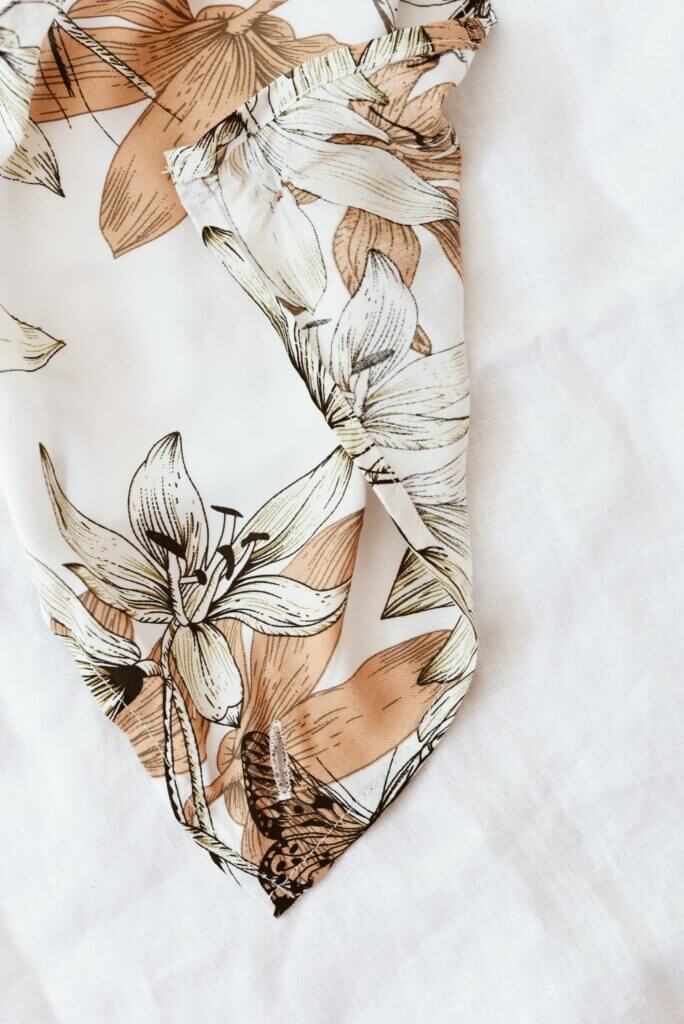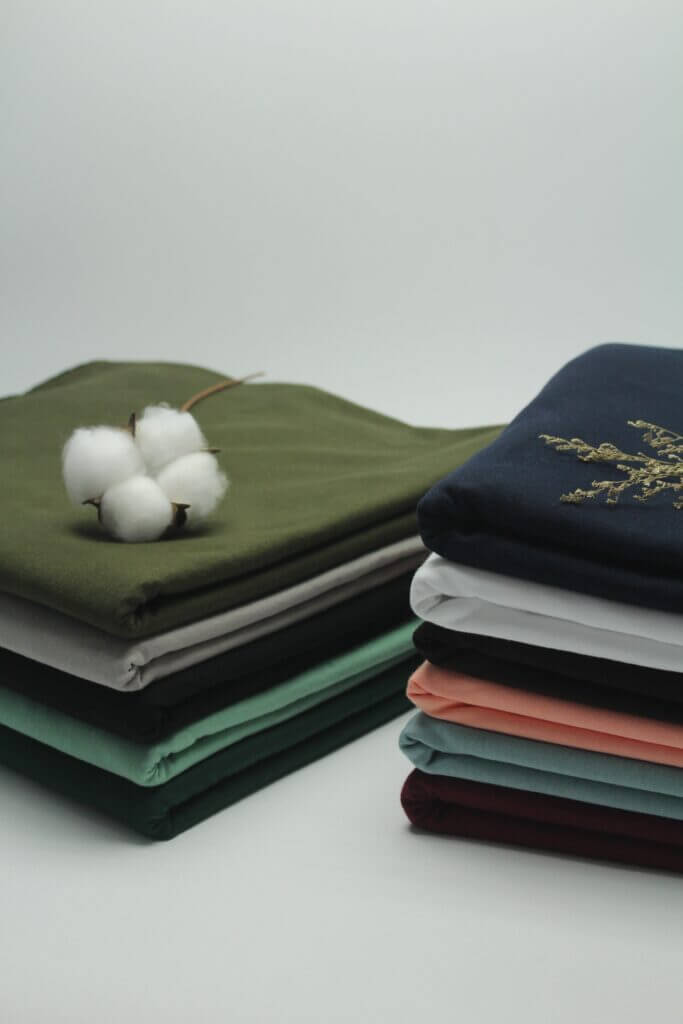Enter the ring, the two textile titans: Cotton and Rayon. These fibres may share a common thread as natural materials, but many distinctions set them apart.
Rayon, a plant-based fibre, undergoes a chemical-laden process to transform into a semi-synthetic fibre. Cotton, on the other hand, remains a natural fibre from start to finish.
You might assume that the eco-friendly choice is obvious, right?
But let’s unravel the cotton vs rayon debate and examine these biodegradable fabrics in detail.
Exploring the Pros and Cons of Rayon vs Cotton

Rayon
The cellulose fibre is converted into a semi-synthetic fibre during the manufacturing process of rayon, which can imitate the texture and feel of natural fibres like cotton, wool, linen, and silk. As cotton prices have risen, rayon has become more common, and people have started to appreciate its qualities. Rayon is a great choice for humid climates because it is cool, smooth, and absorbent.
Although rayon has many benefits, it is not without its drawbacks. It is not machine-washable, and hot water can damage the fibres. Rayon’s flammability and melting tendency make it necessary to iron it with a cool iron or avoid ironing it altogether.

Cotton
The cotton plant produces natural fibres harvested and spun into yarn or thread to create cotton fabric. People have used cotton, a fabric composed of pure cellulose, for centuries due to its versatility and numerous applications. Similarly to rayon, manufacturers use cotton as a versatile material in various products, often blending it with other fibres to enhance its properties and benefits. As the most commonly used fibre and fabric in clothing, cotton is a staple in the fashion industry.
Cotton has its own set of advantages and disadvantages. It is breathable and has natural anti-microbial properties, making it a great choice for bed linens. However, it wrinkles easily and can shrink in the wash if not cared for properly. Cotton’s wet strength is crucial, making it a preferred option for wound dressings and absorbing fluids in the medical sector.
Rayon vs Cotton: Which is Cooler?
It’s no secret that rayon takes the lead over cotton when it comes to staying cool and comfortable. Rayon drapes better than cotton and allows body heat to escape, making it a good choice for summer wear. Rayon’s silk-like appearance also makes it great for formal events. While cotton absorbs moisture, it does not cool you down as effectively as rayon.
So, rayon is the fabric if you want to beat the heat and stay cool in hot and humid weather.
Cotton or Rayon – Which Is Better?
While rayon may be cooler than cotton and have a silk-like feel, it cannot compete with the superiority of cotton in terms of strength, versatility, durability, and all-natural composition. Cotton offers a wider range of colours and designs, is easier to clean, handle, and iron, and does not lose strength when wet, unlike rayon.
However, rayon wins in the flammability category, as it does not catch fire as easily as cotton. In summary, while rayon may be a good choice for certain occasions, cotton is superior, offering more benefits and fewer drawbacks.
Make an Informed Choice

Regarding rayon vs cotton, personal preference plays a crucial role. While rayon can mimic the texture of silk, wool, cotton, and linen, people often blend cotton with other fibres to maximize its benefits as a natural fabric. However, cotton tends to wrinkle and shrink if not washed properly, while rayon requires dry cleaning.
Both fabrics have pros and cons, so it is important to consider the expense, upkeep and intended use before deciding. Regardless of choice, both fabrics make great options for towels, socks, and bed linens.


